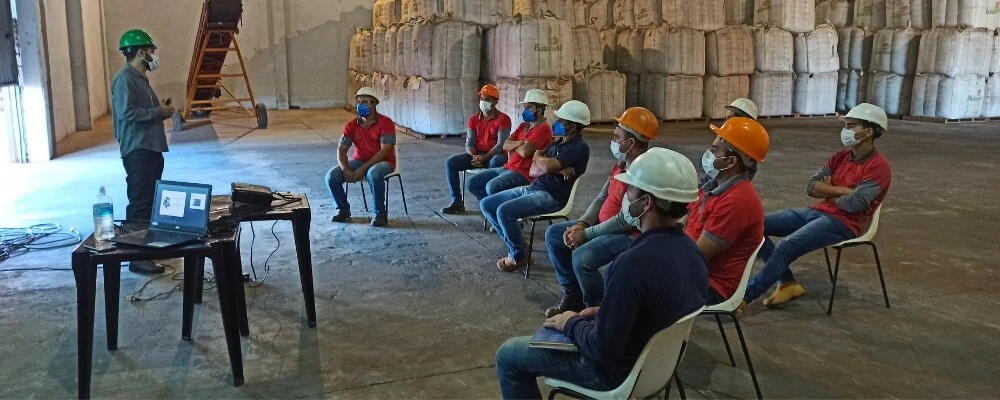In today’s fast-paced work environment, the safety and well-being of employees often become a paramount concern. While productivity and efficiency are crucial, they should never come at the expense of an individual’s health and safety. Recognizing this, it’s essential for businesses and organizations to prioritize discussions on safety topics that directly impact the workplace.
From understanding the basics of fire safety to addressing the often overlooked aspects of mental well-being, these discussions can be the difference between a safe, harmonious work environment and one fraught with risks.
In this blog, we will delve into 20 crucial safety topics that every workplace should discuss and implement. Whether you’re an employer, manager, or employee, understanding these topics is the first step towards creating a safer and more supportive work setting for all.
Safety Topics For Work To Discuss In The Workplace
Discussing safety topics in the workplace is essential to ensure the well-being of employees and to maintain a productive work environment. Here are 20 crucial safety topics to consider:
1. Emergency Preparedness
- Evacuation Routes: Clearly marked and regularly inspected routes that lead to safety in case of emergencies. These routes should be free of obstructions and known to all employees.
- Assembly Points: Designated safe areas outside the building where employees gather after evacuating. It’s essential to ensure everyone is accounted for.
- Emergency Contact Numbers: A list of essential numbers, including fire, police, medical, and other emergency services, should be easily accessible.
2. Fire Safety
- Fire Extinguisher Locations: Employees should be aware of where fire extinguishers are placed and how to access them quickly.
- Usage: Regular training on how to use fire extinguishers can be life-saving.
- Fire Drills: Periodic drills help familiarize employees with evacuation procedures and ensure they can act quickly during a real emergency.

3. Ergonomics
- Workstation Setup: Proper chair height, monitor placement, and keyboard positioning can prevent strain and injury.
- Breaks: Encourage regular breaks to stretch and change posture.
- Equipment: Use ergonomic tools and furniture, like chairs with lumbar support or standing desks.
4. Electrical Safety
- Overloaded Outlets: Plugging too many devices into one outlet can cause fires.
- Frayed Cords: Damaged cords can expose wires, leading to electric shocks.
- Wet Hands: Using electrical equipment with wet hands increases the risk of electrocution.
5. Chemical Safety
- Storage: Chemicals should be stored in appropriate containers and locations, away from incompatible substances.
- Handling: Use gloves, goggles, and other PPE when handling chemicals.
- MSDS: These sheets provide information on chemical properties, hazards, protective measures, and first aid procedures.
6. Slips, Trips, and Falls
- Walkways: Keep them clear of obstacles, cords, and spills.
- Immediate Cleanup: Wet or oily surfaces should be cleaned immediately to prevent accidents.
- Footwear: Encourage wearing non-slip shoes, especially in areas prone to spills.
7. Personal Protective Equipment (PPE)
- Appropriate Selection: Different tasks may require different PPE, such as masks, gloves, or safety glasses.
- Fit: Ill-fitting PPE can be as hazardous as not wearing any. Ensure sizes are appropriate for each employee.
- Maintenance: Regularly inspect and replace damaged PPE.
8. Machine and Equipment Safety
- Maintenance: Machines should be serviced regularly to ensure they operate safely.
- Training: Only trained employees should operate machinery.
- Safety Features: Always use guards, safety switches, and other protective features.
9. First Aid
- Kit Locations: First aid kits should be easily accessible and known to all employees.
- Training: Basic first aid training can help employees respond effectively to minor injuries.
- Restocking: Regularly check and replenish first aid kit supplies.
10. Mental Health and Well-being
- Awareness: Promote understanding and destigmatization of mental health issues.
- Signs of Stress: Educate employees on recognizing symptoms like fatigue, irritability, or withdrawal.
- Resources: Provide access to counseling services, helplines, or wellness programs.

Additional Safety Topics For Work
- Workplace Violence: Discuss prevention strategies, how to recognize potential threats, and what to do in an active shooter situation.
- Lifting Techniques: Teach proper lifting techniques to prevent back and muscle injuries.
- Noise Protection: Emphasize the dangers of prolonged exposure to loud noises and the importance of using ear protection.
- Driving and Vehicle Safety: For those who drive as part of their job, discuss safe driving practices, vehicle maintenance, and the dangers of distracted driving.
- Confined Space Safety: For workplaces with confined spaces, discuss the risks involved and the necessary precautions.
- Heat and Cold Stress: Talk about the dangers of working in extreme temperatures and how to protect oneself.
- Working at Heights: Discuss the importance of using fall protection equipment and following safety protocols when working above ground level.
- Hygiene and Sanitation: Emphasize the importance of regular handwashing, especially in industries like healthcare and food service.
- Cybersecurity: With the increasing reliance on digital tools, discuss the importance of strong passwords, recognizing phishing attempts, and securing sensitive information.
- Hazard Communication: Ensure that all employees understand how to recognize and report potential hazards in the workplace.
By understanding these topics in depth, workplaces can foster a safer and more supportive environment for all employees.
Conclusion
Safety in the workplace is not just a regulatory requirement but a responsibility shared by employers and employees alike. By addressing and implementing the 20 crucial safety topics discussed in this blog, organizations can foster a culture where safety is ingrained in every action and decision.
Remember, a safe workplace is not only about preventing accidents but also about creating an environment where employees feel valued, protected, and empowered. As we move forward in an ever-evolving work landscape, let’s prioritize safety and well-being, ensuring that every individual returns home from work just as they arrived: safe and sound.

